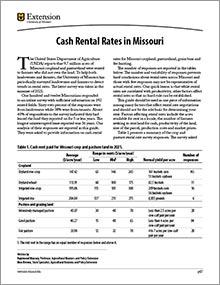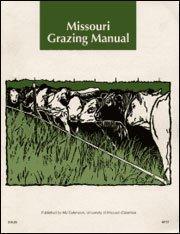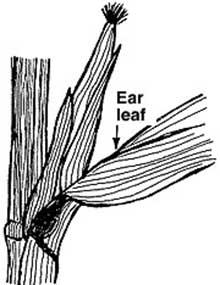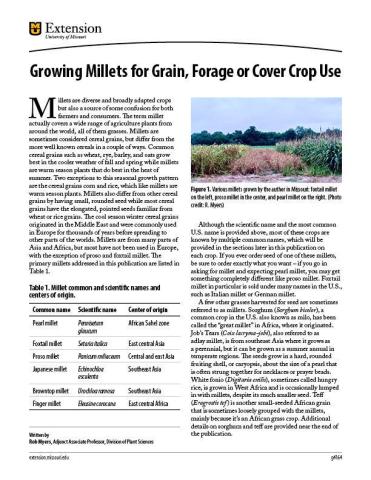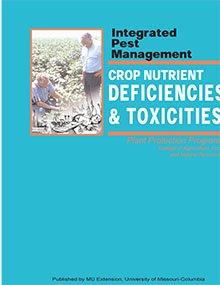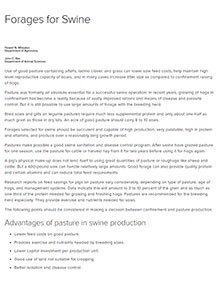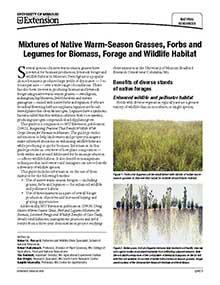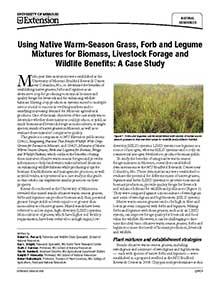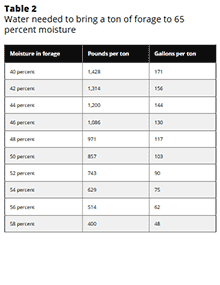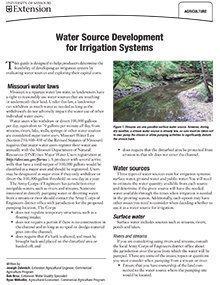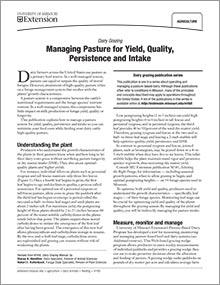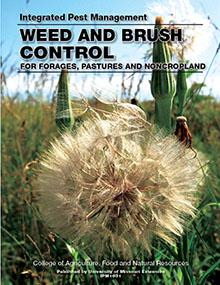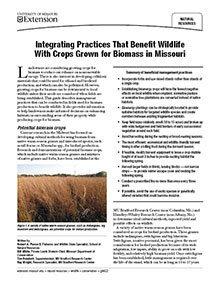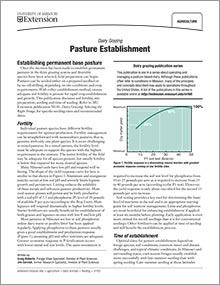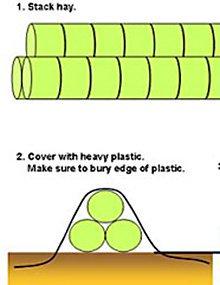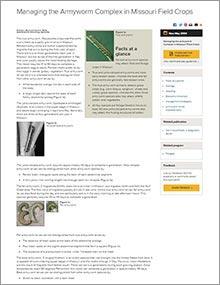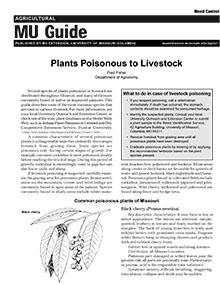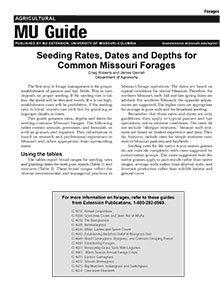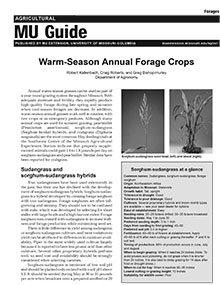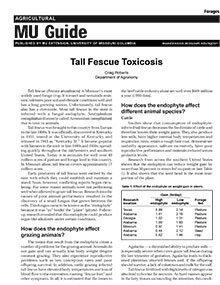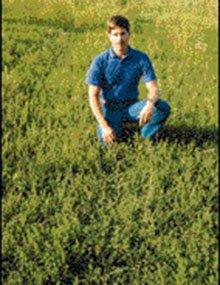The following publications cover topics related to Forages. For a complete list of MU Extension publications, visit the main Publications page.
Cash Rental Rates in Missouri
Revised
Learn about trends in cash rental rates for Missouri cropland, pastureland, grain bins, farm buildings and fee hunting based on survey responses from 112 MIssourians.
Missouri Grazing Manual
Reviewed $20
Learn how soil, forages and animals interact in grazing systems, and get ideas for improving pasture quality and extending the grazing season for beef or dairy.
Sampling Plant Tissue and Soil for Analysis
Revised
Spectrographic analysis of plant tissue is a relatively new and accurate method for determining levels of major and minor elements in growing crops. However, good results make proper sampling of crops necessary. Keep the following points in mind when taking samples:
Crop Nutrient Deficiencies and Toxicities
Reviewed
Editor's note
The following abstract describes a publication that is only available as a downloadable PDF.
Forages for Swine
Reviewed
It is still possible to use large amounts of forage with the breeding herd. Visit our site to learn about using Forages for Swine.
Establishing Mixtures of Native Warm-Season Grasses and Forbs for Potential Biomass, Forage and Wildlife Habitat
New
Learn about the species of native warm-season grasses with potential for biomass production, livestock forage and wildlife habitat in Missouri — switchgrass, indiangrass, big bluestem, little bluestem and eastern gamagrass — in this MU Extension guide.
Wheat Silage for Beef Cattle
Reviewed
Wheat, barley and oat silages are often underrated as feed for growing and finishing beef cattle. Studies show barley silage as being equal to corn silage, but they show that oat silage has about 50 percent the value of corn silage in beef rations.
Dairy Grazing: Managing Pasture for Yield, Quality, Persistence and Intake
New
Dairy grazing publication series
This publication is one in a series about operating and managing a pasture-based dairy. Although these publications often refer to conditions in Missouri, many of the principles and concepts described may apply to operations throughout the United States.
Weed and Brush Control for Forages, Pastures and Noncropland
New $31.00
Annual broadleaf and grass weeds can become a serious problem in pastures and forages. Learn about forage crop, soil and weed problems in Missouri. See color photos of weeds at different stages and select herbicides with the help of tables in this manual.
Integrating Practices That Benefit Wildlife With Crops Grown for Biomass in Missouri
New
Summary of beneficial management practicesIncorporate forbs and use mixed stands rather than stands of a single crop.Establishing bioenergy crops will have the fewest negative effects on local wildlife when cropland, nonnative pasture or nonnative tree plantations are converted instead of native habita
Dairy Grazing: Pasture Establishment
New
This publication is one in a series about operating and managing a pasture-based dairy. Although these publications often refer to conditions in Missouri, many of the principles and concepts described may apply to operations throughout the United States.
Managing the Armyworm Complex in Missouri Field Crops
New
Figure 1a
True armyworm.
Plants Poisonous to Livestock
Reviewed
Seeding Rates, Dates and Depths for Common Missouri Forages
Reviewed
Visit our site for our resource on Seeding Rates, Dates and Depths for Common Missouri Forages.
Warm-Season Annual Forage Crops
Revised
Annual warm-season grasses can be used as part of a year-round grazing system in Missouri. Visit our site to learn about Warm-Season Annual Forage Crops.
Managing Manure on Alfalfa Hay
New
Alfalfa is a high-quality, high-yielding, cool-season forage that can be profitably marketed as hay. Alfalfa is a desirable crop for manure applications because:
Smooth Bromegrass
New
Smooth bromegrass makes for excellent quality hay. Visit our website today to learn more about smooth bromegrass.
Tall Fescue Toxicosis
New
Tall fescue is Missouri's most widely used forage crop. Visit our site to learn about Tall Fescue Toxicosis.
Annual Lespedeza
Reviewed
Annual lespedeza is an acid-tolerant, drought-resistant, summer annual legume useful for pasture, hay & soil improvement. Visit our website to learn more.
Eastern Gamagrass
Reviewed
Eastern Gamagrass is a highly productive grass and is a high-quality forage crop. Visit our website today to learn more.
Establishing Forages
Reviewed
Avoid forage seeding failures by using research-proven procedures. Seeding failures are costly, not only in seed and labor cost, but in providing inadequate feed the following year.
